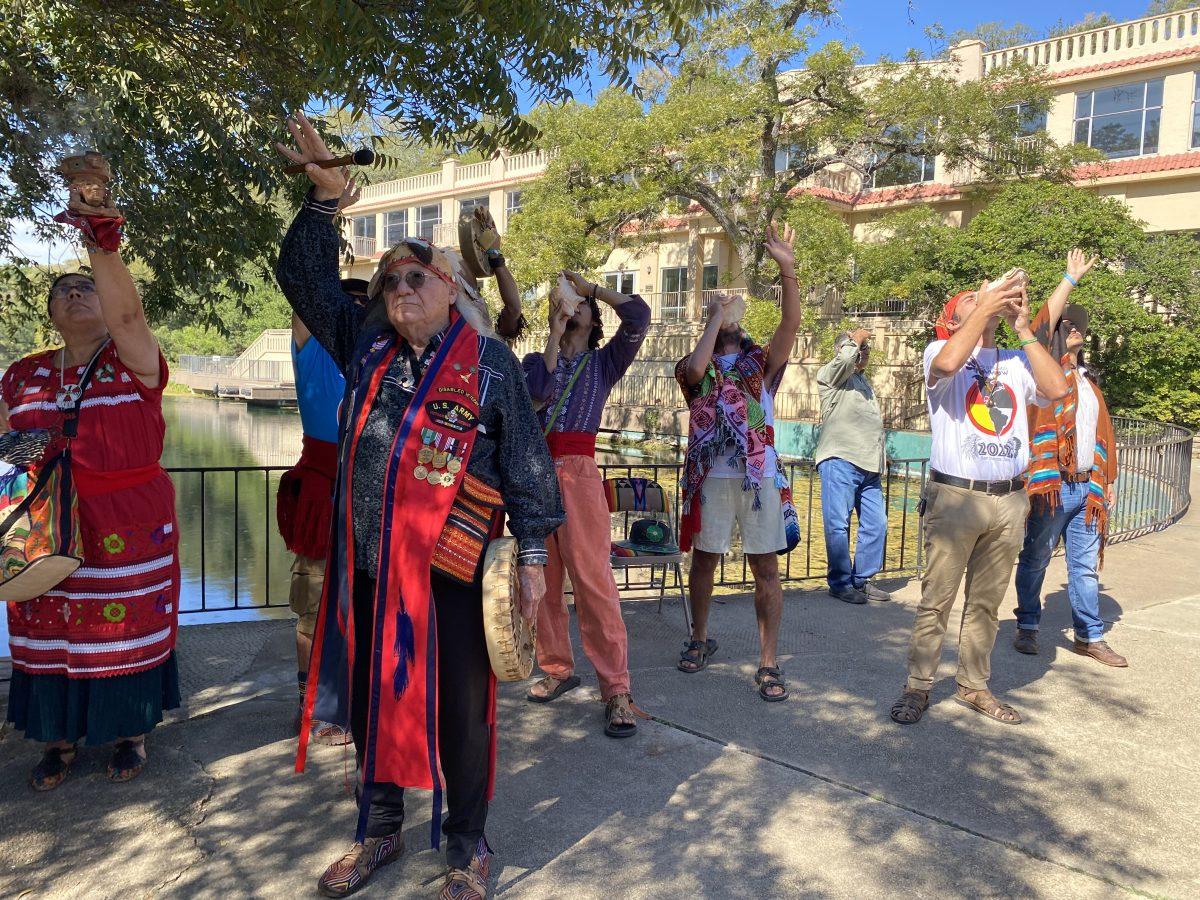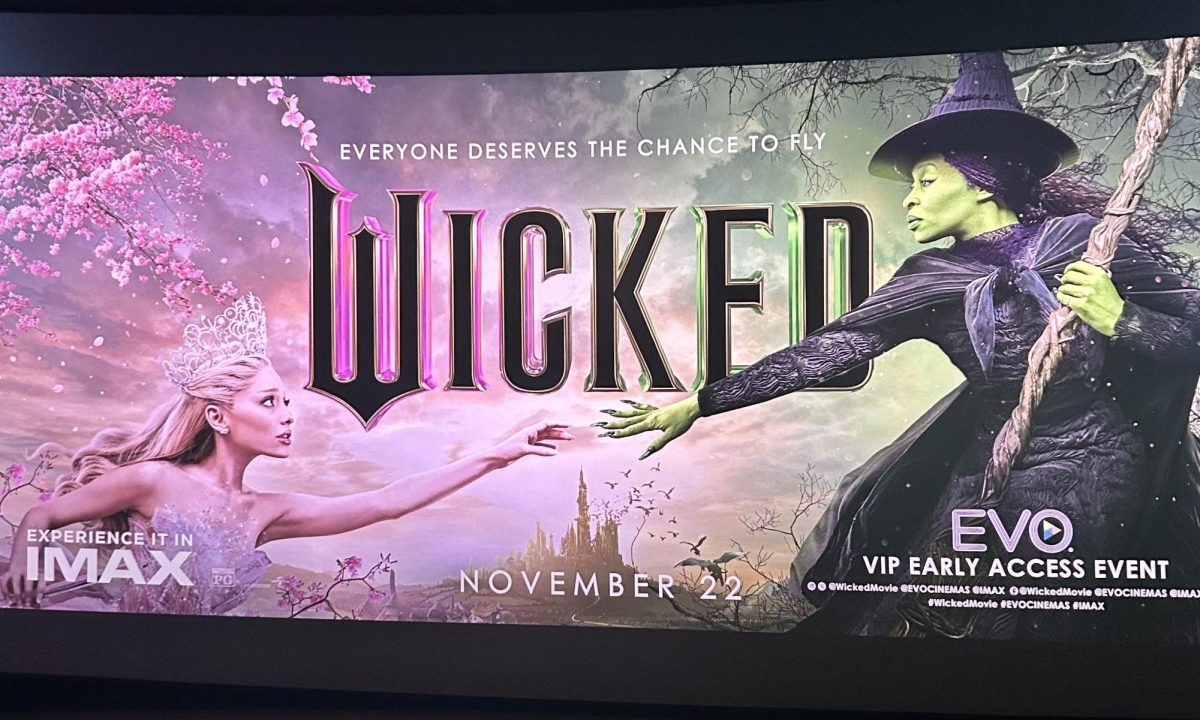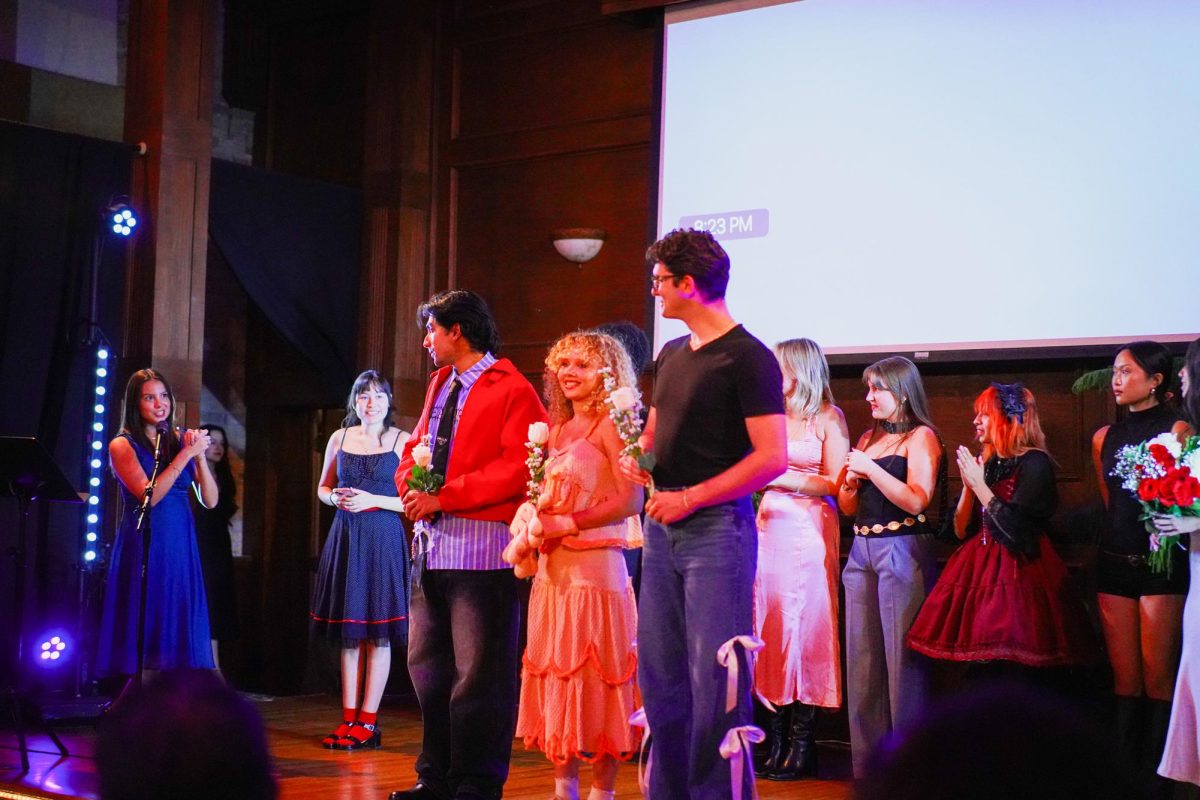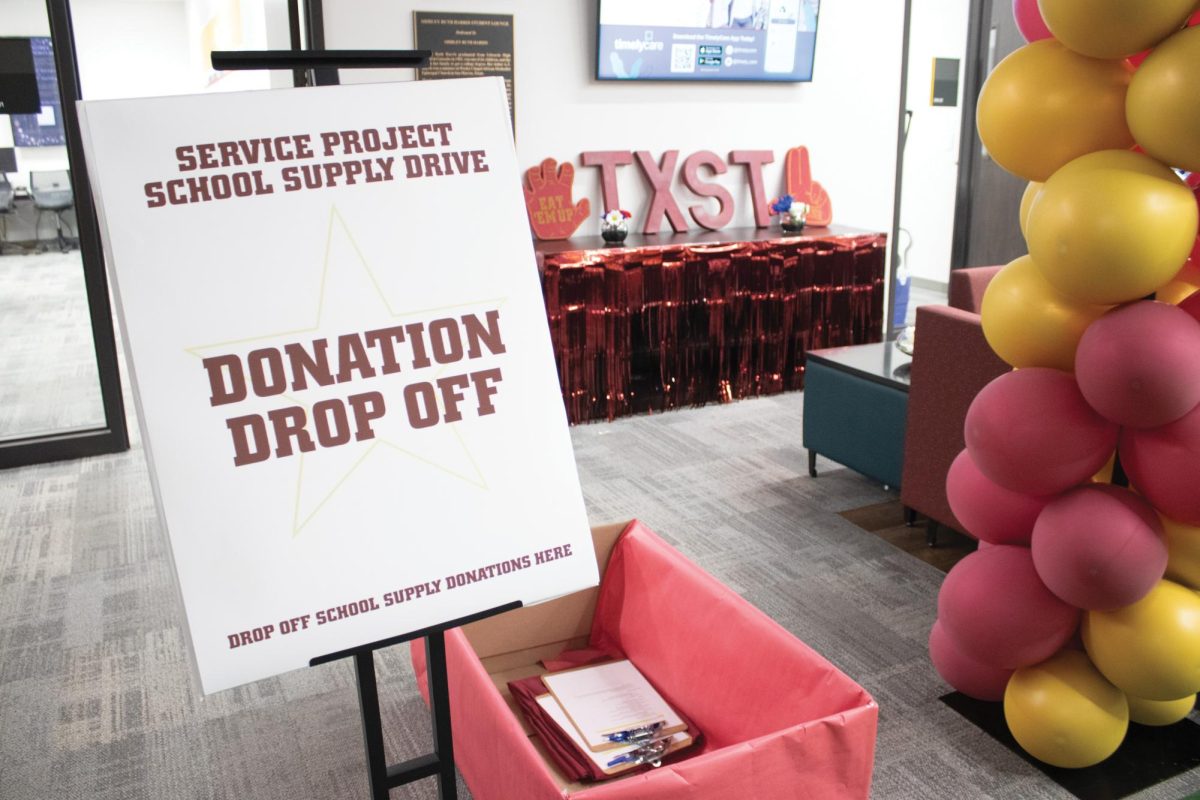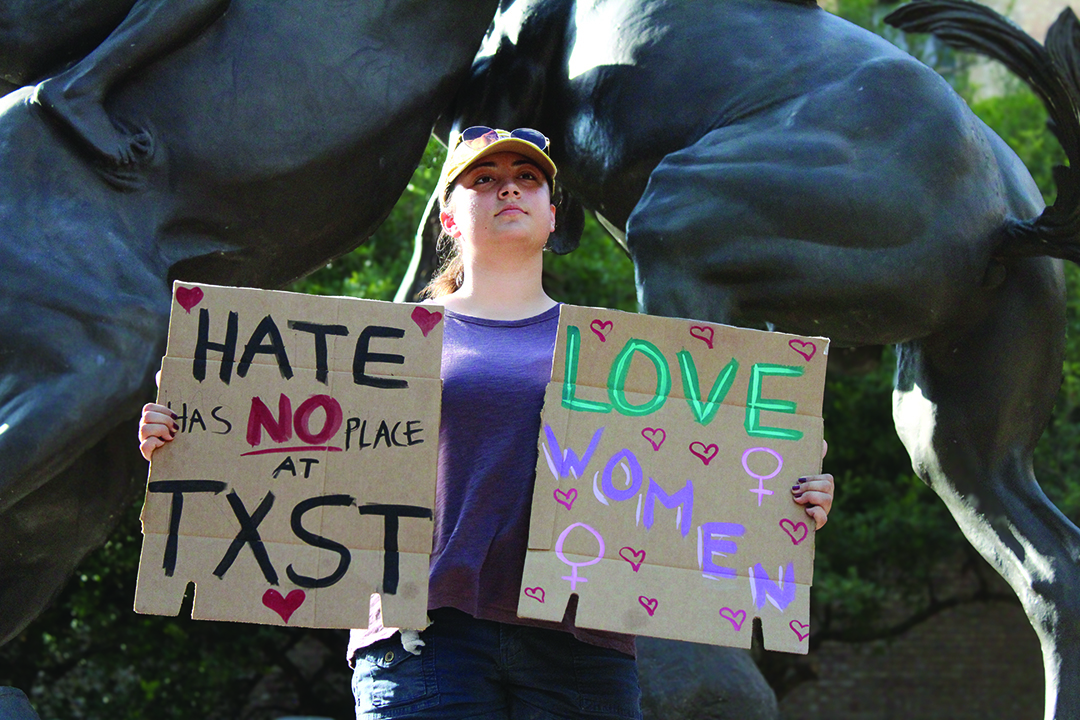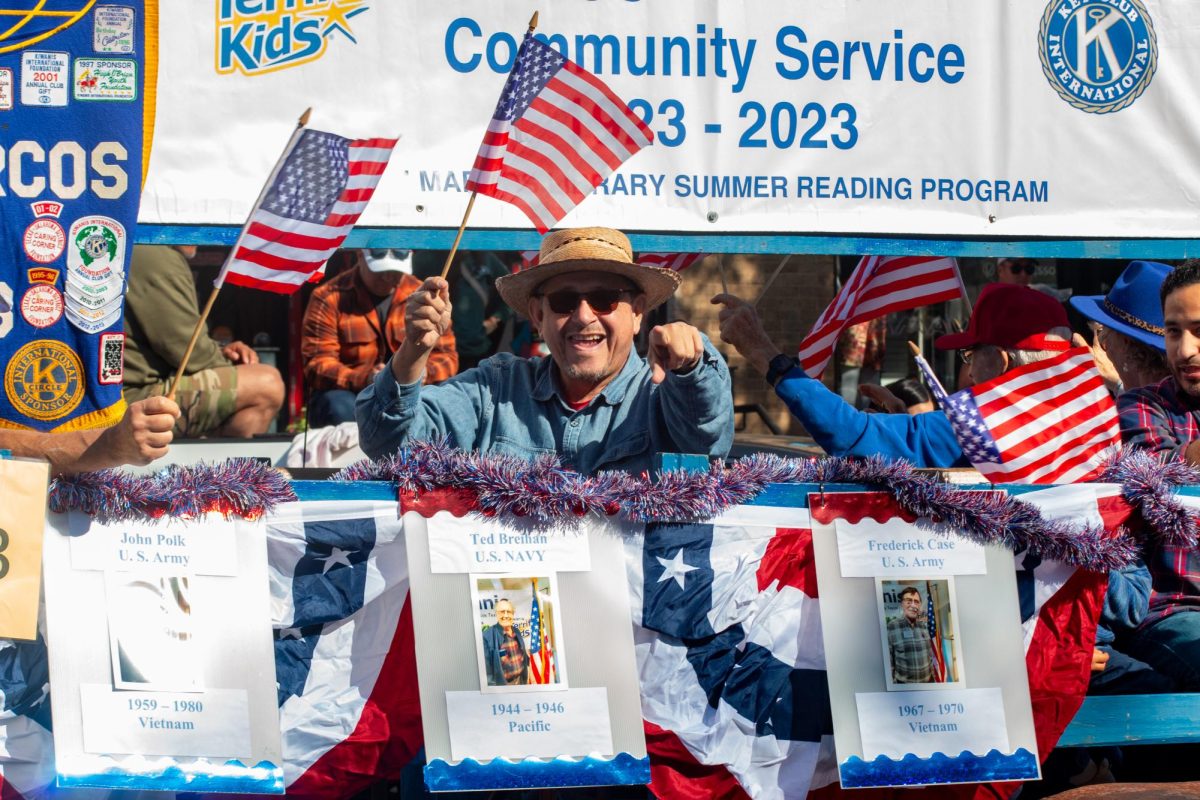The smell of incense and the unmistakable beat of the drum marked the return of the Sacred Springs Powwow since an indefinite in-person postponement, Saturday-Sunday at The Meadows Center.
The Sacred Springs Powwow is organized by the Indigenous Cultures Institute (ICI), a nonprofit that works to preserve the history and culture of Indigenous communities through education and cultural repatriation efforts. The program is funded by the Texas Commission of the Arts, the San Marcos Arts Commission, the Tomblin Family Foundation, Pedernales Electric Coop Charities and Friends of the Powwow.
In 1995, San Marcos experienced its first powwow, led by the late local music legend Lucky Tomblin and his family on the shores of Spring Lake, a sacred site for the Coahuiltecan people. The Sacred Springs Powwow is conducted annually in honor of the Tomblin Family.
Aaron Pyle, a member of the Board of Elders of the ICI, has been part of the Sacred Springs Powwow since it began. Although he was removed from his Choctaw heritage at the age of 13, Pyle was able to reconnect with his roots during his time as a student at Texas State.
“The Native way of life is all about building relationships,” Pyle said. “So much of our history is challenging, so the focus on community, culture, and connectivity is how the Indigenous Cultures Institute carries on its legacy.”
A powwow is a festival where people from various indigenous cultures gather to celebrate Native American culture with drums, dancers dressed in regalia and Native food.
After a brief two-year in-person hiatus due to COVID-19, the 12th annual Sacred Springs Powwow on the shores of Spring Lake brought over 100 traditional musicians and dancers, educational workshops and vendors.
The San Marcos springs remain one of the oldest continually inhabited sites for the Native Americans of south Texas and northern Mexico, collectively called Coahuiltecans. A string of cave drawings from an estimated 4,000 years ago, called the White Shaman Mural, connects the four major springs of the Edwards Aquifer to the origin story of the people.
Although the Coahuiltecans are one of the smallest populations in the nation, the ICI plans on continuing its outreach to the San Marcos community.
“We have good stories and good traditions to pull from; we are just trying to find an opportunity to let the community access it,” Pyle said.
The weekend’s celebration brought over 40 vendors. Smiling faces behind tables lined with homemade jewelry, colorful tapestries and dream catchers served the 5,000 attendees over the two-day event.
Oscar’s Bows, founded by San Marcos native Oscar Duran, was one of the vendors present at this year’s event. Aided by his wife and daughter, Duran sold his hand-carved bows, arrows and knives in his 20th year attending the powwow.
“I am looking forward to educating people with the items that I excel in and meeting new people,” Duran said. “Educating at Powwow is important because people get the information from someone that has talked about it for years. You could always read about it but hearing about and seeing it face to face is more interesting.”
Duran has been making his bows ever since he was a child. He said that he continues to attend the celebration every year because he has always been fascinated by the culture on display, despite not being Native American himself.
Texas State’s Hispanic Business Student Association (HBSA), Bilingual Education Student Organization, Hombres Unidos, Sigma Lambda Beta and Sigma Lambda Gamma co-sponsored the event as well.
Nathan Kohut, a history senior, is a member of Texas State’s Sigma Lambda Beta fraternity. As former president of the chapter, Kohut is no stranger to community service in San Marcos.
“Ultimately, yes we pay tuition to be here as students, but we are hosted by the San Marcos and Texas State community,” Kohut said. “At the end of the day, it’s important for student organizations to give back.”
Because service is one of the pillars of Sigma Lambda Beta, Kohut was eager to help out this year. Kohut said he always looks forward to the vendors, food and the Native culture on display at the powwow.
Among other attractions, the main event of each powwow is the dance competition. Under the Arena Tent, dancers come from across the country to compete for $12,000 in cash prizes.
This year, hundreds of dancers competed in multiple categories for prize money. The women’s competition featured Cloth, Buckskin, Fancy Shawl, Jingle and Golden Age dance categories. The men’s competition had Traditional, Straight, Fancy, Grass and Golden Age dance categories. Youths this year also competed in the Girls, Boys and Tiny Tots categories.
Mario Garza board of elder’s chair and the principal founder of the ICI, is a driving force behind the continuation of the tradition of the Sacred Springs Powwow. Since 1995, Garza and the ICI have continued their work through educating the public and repatriation efforts such as the Sacred Springs Powwow as well as summer youth programs and native language workshops.
“The purpose of the powwow is to educate,” Garza said. “We do this to let people know that we survived, that we are still here celebrating our culture and that we will be around for a while.”
For more information about the Annual Sacred Springs Powwow, visit https://www.sspowwow.com/.
Categories:
San Marcos celebrates culture at 12th annual Sacred Springs Powwow
Zachary Scott, Life and Arts Contributor
October 5, 2022
0
Donate to The University Star
Your donation will support the student journalists of Texas State University. Your contribution will allow us to purchase equipment and cover our annual website hosting costs.
More to Discover


